Lazurit Furniture Store: Increase in Revenue from the Abandoned Cart by 84%, Segmentation and A/A/B Testing
Lazurit Furniture Store: Increase in Revenue from the Abandoned Cart by 84%, Segmentation and A/A/B Testing
Challenges
Increase the revenue of an abandoned cart flow
Solutions
Segment customers by the value of an abandoned cart and personalize offers for each segment
Results
Growth of abandoned cart indicators:
+84% to revenue
+139% to order conversion
+140% to the number of orders
+16% of users visited the website
+84% to revenue
+139% to order conversion
+140% to the number of orders
+16% of users visited the website
Integrated with:
ERP
Noteworthy features
Expensive abandoned cart discounts depend on the number of products:1-2 products — $75 off;more products — 5% off of the purchase
Previously, Lazurit used to send customers with abandoned carts a standard sequence of three emails, serving as reminders about the products and providing discount offers. Despite the growing customer base, the revenue from abandoned carts remained the same. To address this, we conducted an experiment by categorizing customers into seven segments based on the value of their abandoned carts. Subsequently, we tailored a personalized offer for each segment to enhance the effectiveness of our marketing approach. A CRM marketer at Lazurit provides insights on the results of the experiment:
- How to save money on discounts and not lose customers.
- Which discount — in USD or in a percentage — works better.
- How a non-standard email subject affects the open rate.
Results
Disclaimer: Our goal was not to precisely measure the exact change in the effectiveness of abandoned carts. We aimed to have at least a rough understanding of the impact of customer segmentation and communication updates. Therefore, the results are approximate.
Our entire project to improve abandoned carts consisted of a series of tests where option A represented the old version of the email and option B represented the new version. To ensure reliability, we conducted AAB tests, meaning two groups of subscribers received option A, while the third group received option B.
To compare the effectiveness of the old and new flows, we compared the performance of option A across all tests and the performance of option B across all tests (including the results of the added pop-up in the flow). We did not consider web push notifications in our calculations as they did not generate any orders for us. Since there were two option A groups, we calculated their direct average. For example, we calculated the ratio of revenue from the new communications to revenue from the old communications as follows:

-
+84
% to revenue -
+139
% to order conversion -
+140
% to the number of orders -
+16
% users who visited the website
Google Analytics data, Last Click Attribution method.
Why and How Customers Were Segmented by Cart
Previously, we sent a flow of three emails to all customers with an abandoned cart:
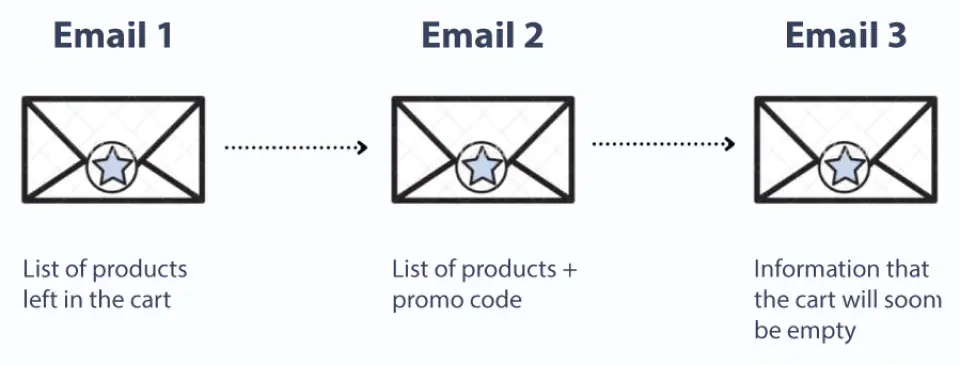
Lazurit incorporated a series of emails in the flow, which served as reminders for customers about the products in their carts, accompanied by the provision of a promotional code for their purchase
The trigger flow was long, but inefficient — while the customer base expanded, the revenue failed to grow correspondingly.
Lazurit’s customers have diverse furniture needs and varying stress levels, ranging from individuals seeking specific products like chairs or tables to those looking to furnish their entire apartment. Therefore, it is crucial for Lazurit to adopt a personalized approach to cater to each customer’s unique requirements.
Taking this into consideration, we divided the customers by the value of the abandoned cart into seven segments:

Customers were divided into segments depending on the value of the abandoned cart. Lazurit reduced the number of emails to two, added web push notifications and pop-ups to the flow
For each segment, we developed a hypothesis that needed to be tested. Let me illustrate the hypotheses with three hypothetical segments, referred to as the low-value, medium-value, and high-value abandoned cart segments.
Segment
Hypothesis
Low cart value ($125 — $215)
Personal offers will increase the average order value
Average cart value ($445 — $950)
Reducing the discount will not lead to a decrease in the number of orders
High cart value ($1,900 — $2,500)
Discount and free services will increase the number of orders
Additionally, we aimed to assess the impact of non-standard email subject lines on the open rate and determine the most effective approach for offering discounts, whether in percentage or fixed amount.
Which Communications Were Tested
Segment with a low abandoned cart value ($125 — $215)
Goal: Increase the average order value using personal offers.
Customers in this segment received a series of two emails, a web push notification, and a pop-up message.
In this case, we won’t discuss web push notifications as they didn’t generate any orders or revenue.
An email without a discount and an email with a 5% discount. We sent two variants of the first email in the flow. In the first variant we did not offer a discount, and provided a 5% discount on an order from $250 in the other.
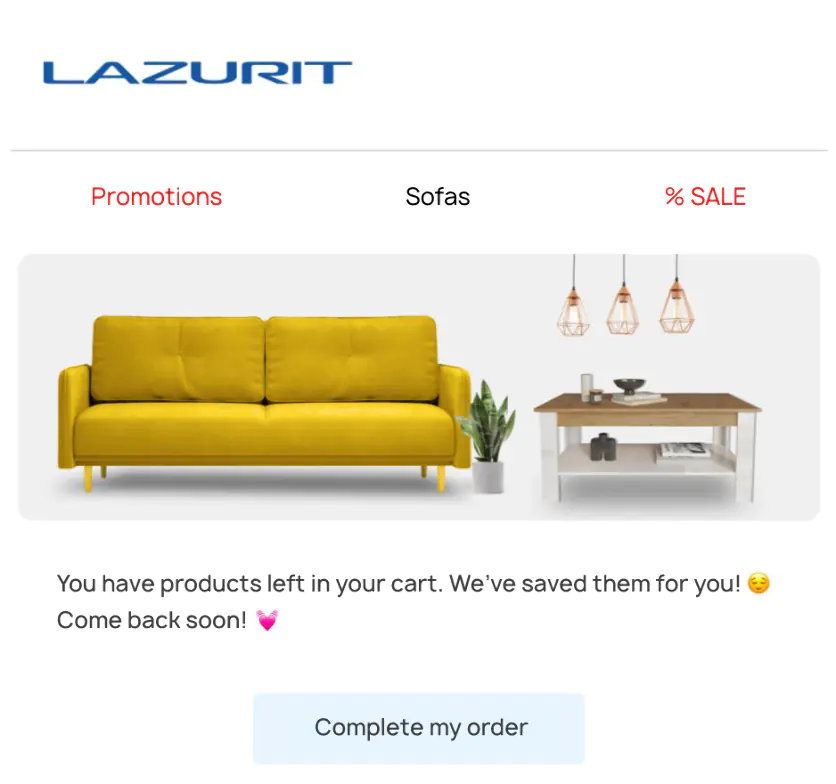
Options 1 and 2 The old version of the email without a discount reminds about the product in the cart
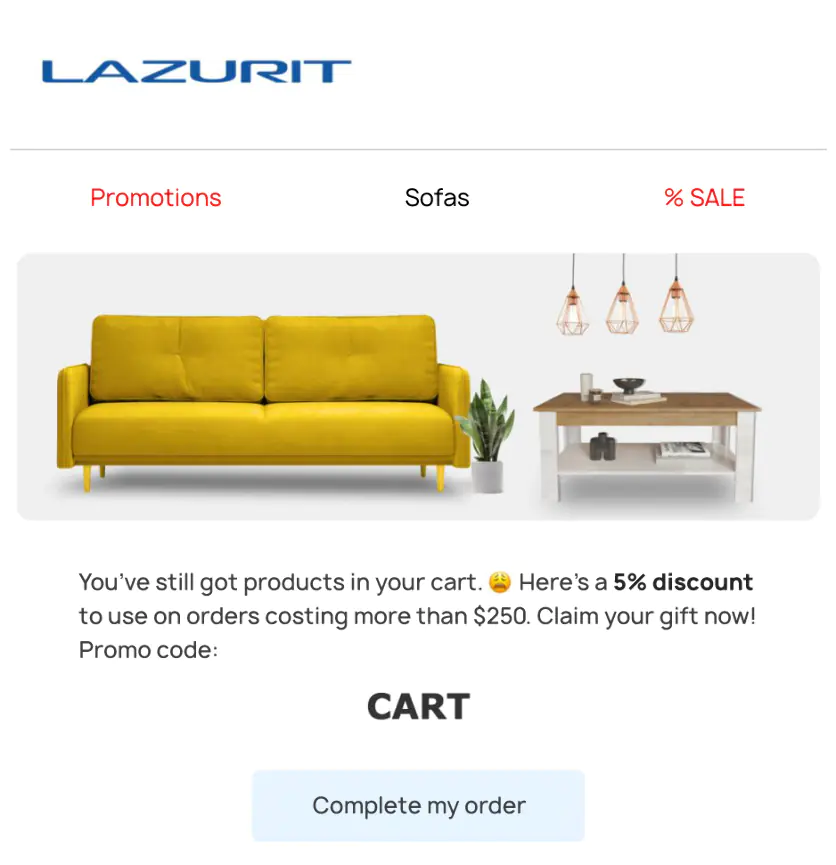
Option 3 The revised version of the email provides a 5% discount on orders totaling $250 or more
Click rate
Option 1. No discount
10,5%
Option 2. No discount
9%
Option 3. 5% off
13,4%
Non-standard email subject. In the second email of the flow, we conducted an experiment to evaluate the impact of giving the email subject an emotional tone. To do this, we sent two versions of the email to the segment with a low cart value — one with a standard subject and the other with an emotionally charged subject.
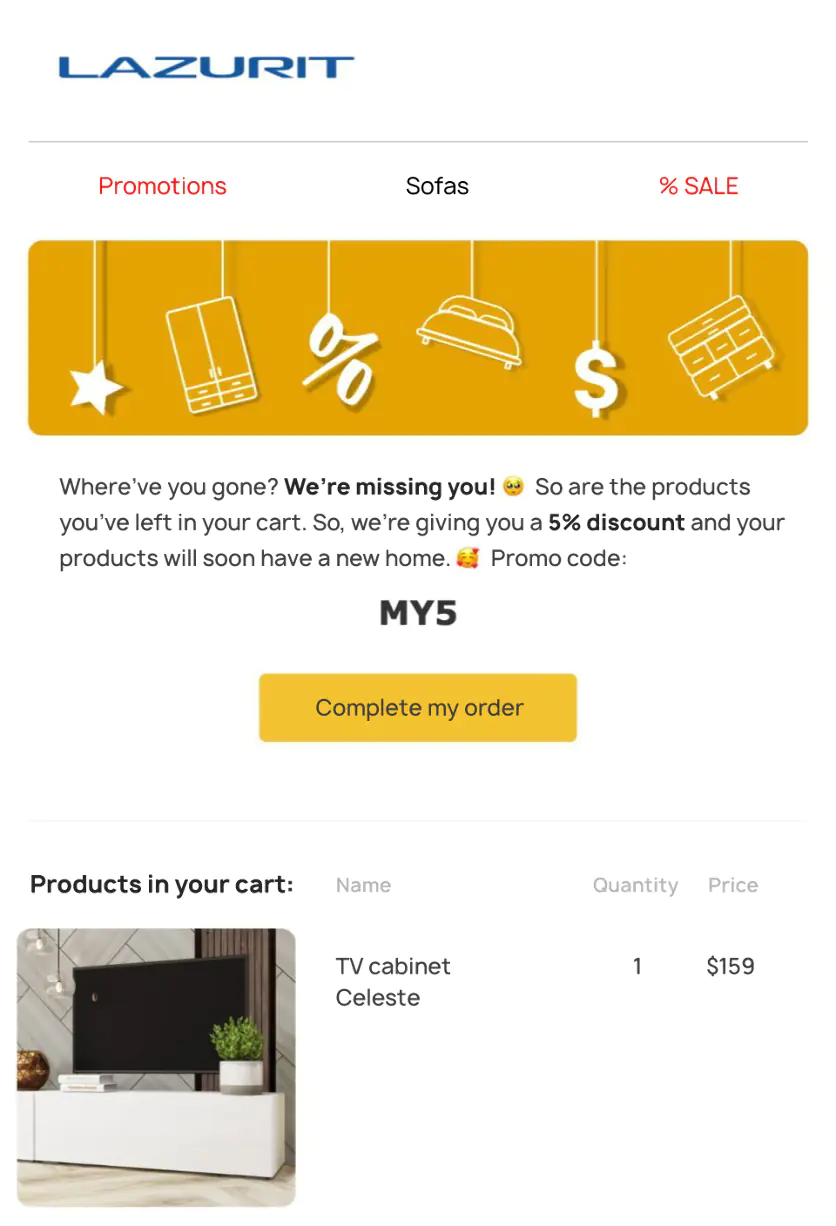
Pop-up with a discount. In the updated flow we introduced a new pop-up. Customers with abandoned carts would encounter the pop-up when they visit the website. In it, we offer a 5% discount on orders totaling $250 or more.

The website’s pop-up presents customers with a discount offer on orders starting from $250, specifically targeting those with a lower cart value.
-
1,164number of displays in 10 days
-
$1,250average order value after displaying the pop-up
-
32 %the share of orders in this segment made via pop-up
We had the assumption that the pop-up would potentially increase the average order value by up to $65. However, there were concerns regarding customers who added products totaling $12 to $240 in their cart and their willingness to make a purchase for a significantly higher amount. We made a mistake: the average order value after displaying the pop-up is $1,250. Based on the obtained result, it may be beneficial to incorporate pop-ups into the email flows of other segments as well.
The Result of Campaigns in the Segment With a Low Cart Value (Excluding Pop-Up)
RPE, income from one email
Before the update
$2.58
After the update
$2.87
Segment with an average abandoned cart value ($445 — $950)
Goal: Reduce the discount without losing the number of orders.
Two emails and a web push notification were sent to the customers of this segment.
An email with a 2% discount and without discount. We have prepared two options of the first email: the first option was without a discount, the second one offered a 2% discount on an order over $449.
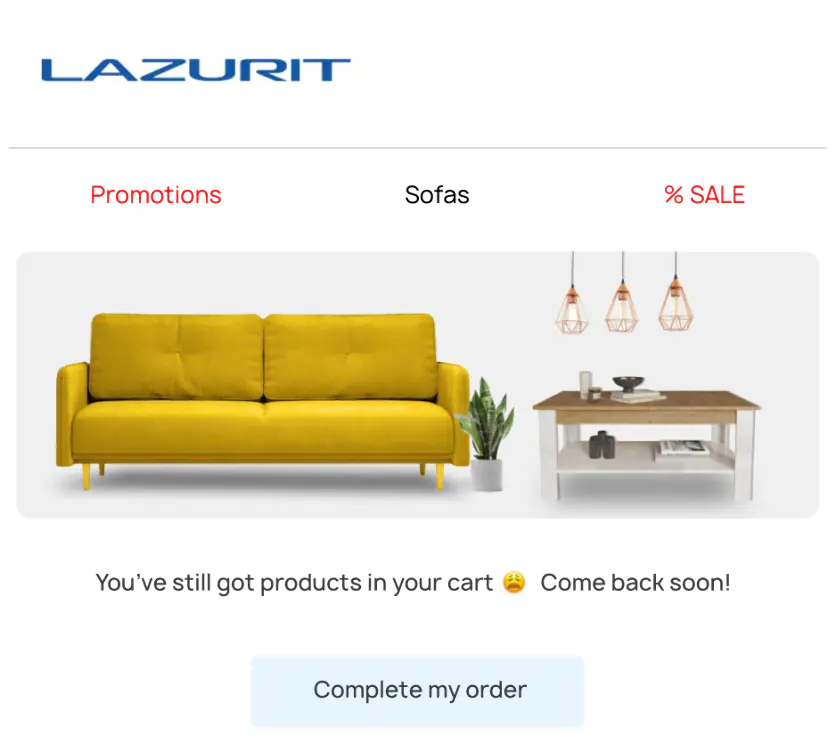
Options 1 and 2. An email without a discount reminds customers of the products in the cart
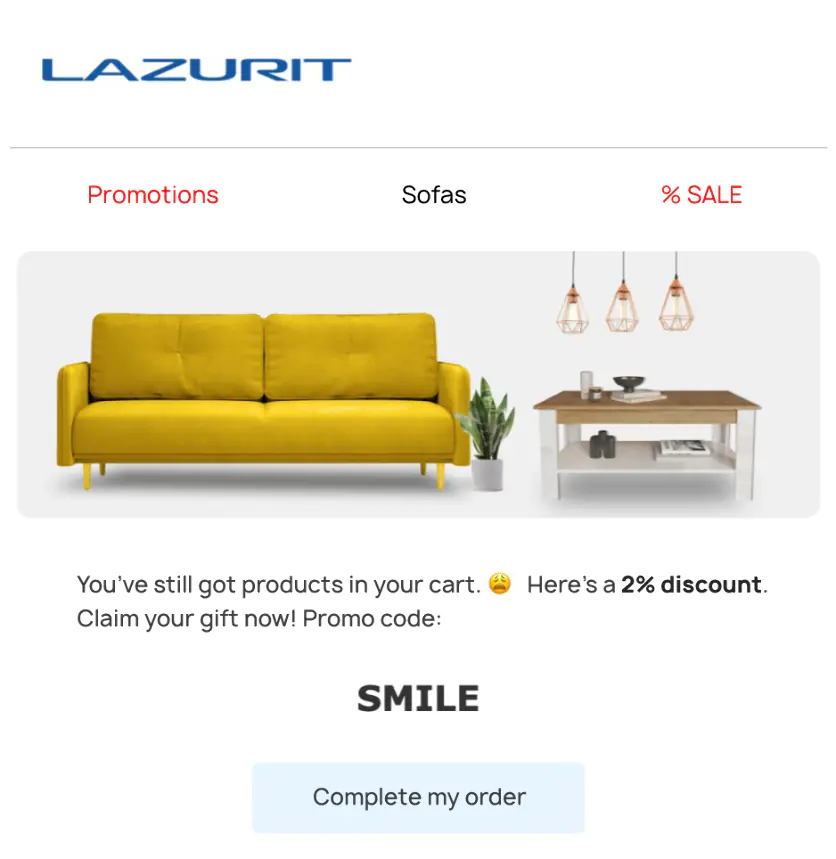
Option 3. The revised version of the email provides a 5% discount on orders totaling $250 or more
Click rate
Option 1. No discount
9,3%
Option 2. No discount
11,7%
Option 3. 5% off
15,6%
An email with a 5% discount or $39. In the second email of the flow, we offer customers a discount on the order value. Within the segment with the average cart value, we conducted a test to observe how the open rate would be influenced by the type of discount mentioned in the email subject — whether it is expressed as a percentage of the purchase or in monetary terms. The first option of the email is a 5% discount on the entire order value, the second option is a $39 discount on an order over $449.

Subject: 5% off on products in the cart? Promo code inside?
Options 1 and 2. An email from the old flow offers a 5% off on the entire order
Options 1 and 2. An email from the old flow offers a 5% off on the entire order

Subject: $39 discount on products in the cart? Promo code inside?
Option 3 The new letter offers a $39 discount for an order over $449
Option 3 The new letter offers a $39 discount for an order over $449
Open rate
Option 1. 5% off
30,6%
Option 2. 5% off
30,2%
Option 3. $39 discount
33%
In contrast to the open rate, the conversion rate to an actual order was lower for an email offering a fixed discount of $39 compared to an email offering a discount in percentage terms. We assume that customers do not like the condition “when ordering over $449”
The Result of the Campaign by Segment with the Average Value of the Abandoned Cart:
RPE, $
Before the update
2.38
After the update
3.46
Segment with a high abandoned cart value ($1,900 — $2,500)
Goal: Increase the number of orders with discounts and free services.
Two emails and a web push notification were sent to the customers of this segment.
An email without a discount and with a 2% discount. We compared two options of the first email of the flow: with a 2% discount on the order and without a discount.

Options 1 and 2. Email without discount
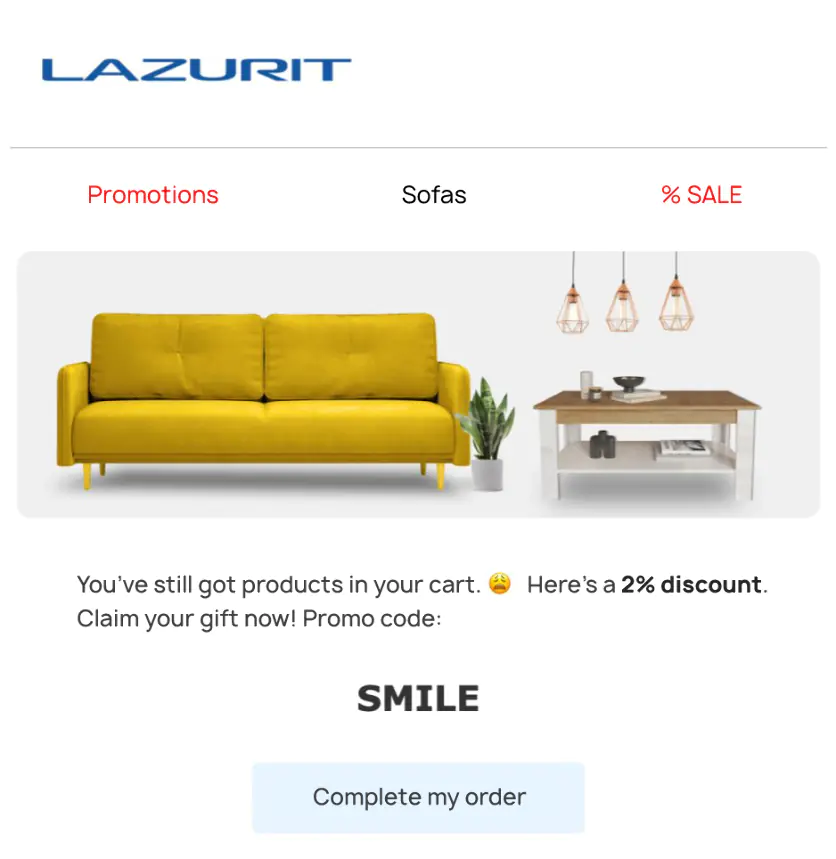
Option 3. The email offers a 2% off on the order
Click rate
Option 1. No discount
9,3%
Option 2. No discount
11,7%
Option 3. 2% off
15,6%
An email with a 5% discount or $78. As in the segment with the average cart value, we checked how the type of discount (in percentage or money) affects the open rate. We have prepared two options of the email: the first — with a 5% discount on the entire order value, the second — $78 off when buying from $1,900.
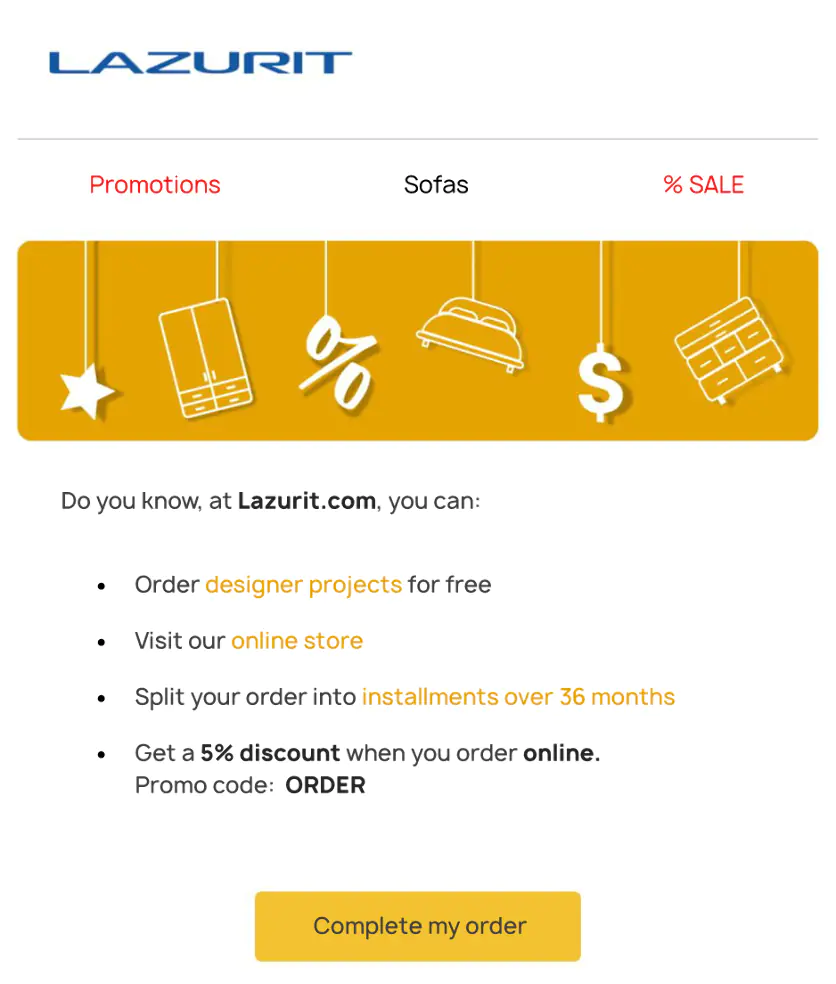
Subject: 5% off on products in the cart? Promo code inside?
Options 1 and 2. 5% off on online order
Options 1 and 2. 5% off on online order
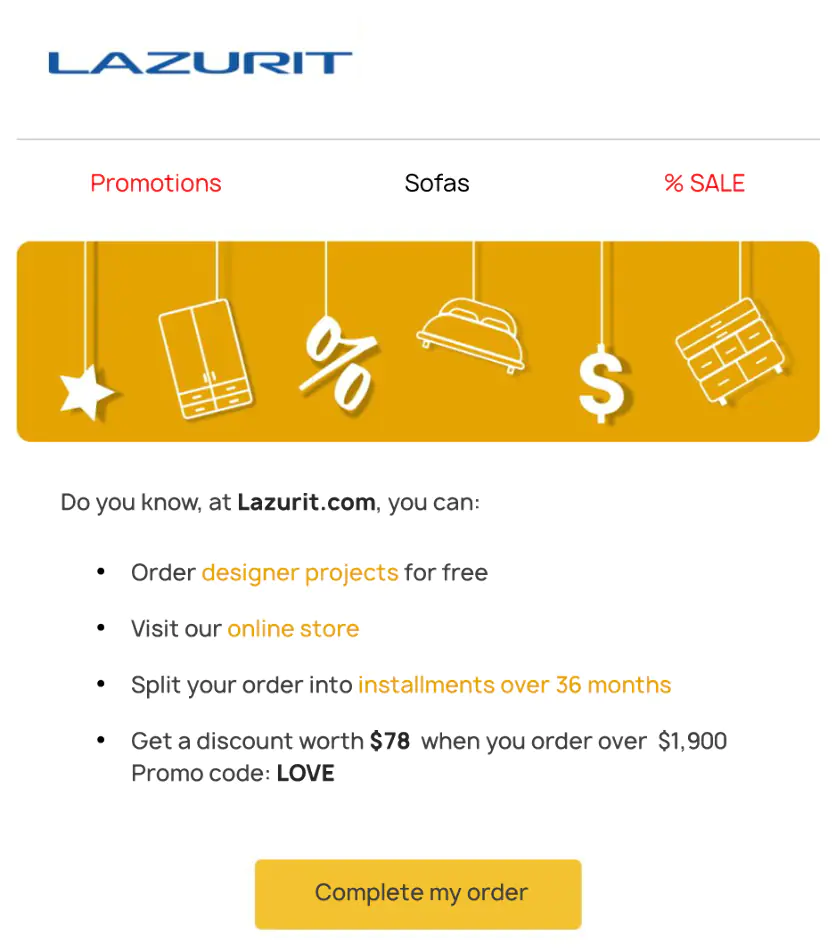
Subject: $78 discount inside? Would you like to place an order while the products in the carts are still in stock?
Option 3. $78 discount when buying from $1,900
Option 3. $78 discount when buying from $1,900
Open rate
Option 1. 5% off
32,3%
Option 2. 5% off
31%
Option 3. $78 discount
44%
The result of campaigns in a segment with a high cart value. To our surprise, the new communication approach yielded less favorable results compared to the previous one. We expected that the number of orders would increase, and we were wrong.
RPE, $
Before the update
2.22
After the update
1.08
We found that the high cost of an abandoned cart can often be attributed to customers using the cart as a means of comparing multiple products, rather than having the intention to purchase all of them. Hence, offering a discount on purchases of $1,250 or more doesn’t captivate customers since they do not intend to make such high-value purchases. The benefit of 5% attracts customers much more.
We have now categorized the abandoned carts based on the number of products they contain. If a cart consists of one or two products with a total value of $1,250, we offer a discount based on the total amount. On the other hand, if the cart contains multiple products, we provide a 5% discount. So, the customer will make a choice of several options, remove unnecessary products and receive a 5% discount.
Here are the conclusions drawn regarding the use of the cart
The experiment revealed that customers don’t only use the cart to complete a purchase. They actually add various products to their carts without making a purchase. It is possible that customers used the cart as a wishlist, selecting products they liked with the intention of revisiting it later, making adjustments, and eventually completing the purchase.
Other customers used the shopping cart as a comparison list, adding the same products in different colors to facilitate their decision-making process and choose the most suitable option. Usually such customers abandon the cart as they are not yet prepared to complete the purchase. Perhaps a consultation will help them make a choice and complete an order.
We also noticed that certain high-valued carts often contain only one to three products, suggesting that customers may exhibit hesitancy in placing an order immediately. In order to understand the reason behind it, we have implemented a strategy of redirecting such customers to our sales department. Our dedicated employees will engage with them, uncover their needs and preferences, and provide assistance in completing the order.
Conclusions Based on the Results of the Experiment
- Creating narrow segments on an abandoned cart increases revenue.
- Customers like a non-standard email subject, i.e. an email with a unicorn in the subject has a 8.2% higher click rate.
- Offering a discount in monetary terms rather than as a percentage appears to be more effective, as it yields a higher click-through rate. It is possible that customers may feel fatigued by seeing discounts expressed in percentages, as it requires them to calculate the actual discount amount.
- Pop-ups effectively bring customers back to their abandoned carts, with a significant impact on conversion rates. The share of orders generated through pop-ups among all abandoned carts is 32%, while the contribution to overall revenue from abandoned carts is 28%. In other words, if orders worth $1,250 were generated from abandoned carts, the implementation of a pop-up resulted in a revenue of $355.
- Customers use the cart as a wishlist and a comparison list. To help customers complete an order with a high cart value, we redirect them to the sales department.



